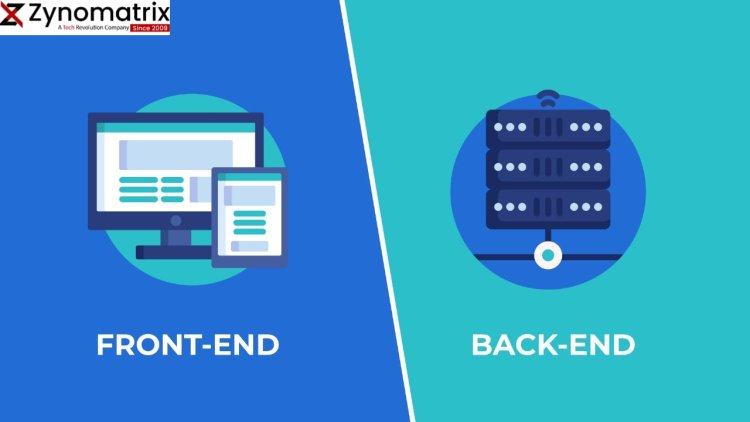"Demystifying Backend and Frontend Development: Unveiling the Tech Magic"
In the realm of web development, two distinct yet interdependent worlds exist: frontend and backend development. Our blog post delves into the intriguing differences and symbiotic relationship between these two domains. Discover how frontend wizards craft captivating user interfaces using HTML, CSS, and JavaScript, while backend maestros architect the invisible infrastructure using programming languages, databases, and APIs. Gain insights into their collaborative dance and how these tech realms converge to create the digital experiences we love. If you're a tech enthusiast eager to unravel the magic behind web applications, this exploration of frontend and backend intricacies is a must-read.

Introduction
In the world of web development, two essential components play a pivotal role in creating the seamless user experiences we enjoy on the internet - frontend and backend development. While they may sound similar, they serve distinct purposes and require different skill sets. For tech enthusiasts, understanding the nuances of these two realms can deepen their appreciation for the digital landscape. So, let's dive into the world of backend and frontend development.
Frontend Development: Crafting User Interfaces
Frontend development is like building the façade of a building - it's what users see and interact with directly. Tech enthusiasts interested in frontend development focus on creating captivating and intuitive user interfaces that engage visitors and deliver a smooth user experience. This involves employing a combination of programming languages such as HTML, CSS, and JavaScript.
- HTML (Hypertext Markup Language): This forms the backbone of every webpage, structuring its content into headings, paragraphs, lists, and more.
- CSS (Cascading Style Sheets): CSS is responsible for the visual presentation of a webpage. It controls the layout, colors, fonts, and overall aesthetics, ensuring a visually appealing user interface.
- JavaScript: Adding interactivity and dynamic behavior to websites is the role of JavaScript. From animations to form validation, JavaScript is the engine powering modern web applications.
Frontend developers need to stay updated with design trends, accessibility standards, and responsive design principles to create user interfaces that function seamlessly across various devices and browsers.
Backend Development: The Invisible Tech Powerhouse
Behind the scenes of every user interface lies the backend, an intricate system that handles data processing, storage, and overall functionality. Backend development involves building server-side logic and databases to ensure the frontend's requests are fulfilled effectively.
- Server-Side Programming Languages: Backend developers work with languages like Python, Ruby, PHP, Java, and Node.js to build the logic that processes user requests and generates responses.
- Databases: Structuring and managing data is a crucial part of backend development. Technologies like SQL and NoSQL databases ensure that data is stored securely and can be retrieved efficiently.
- APIs (Application Programming Interfaces): APIs facilitate communication between different software applications. Backend developers create APIs that allow the frontend to interact with various services and databases.
Security, scalability, and performance optimization are paramount in backend development. Tech enthusiasts in this field need to be proficient in algorithms, database design, and server management to ensure that the applications they build are robust and reliable.
Collaboration and Symbiosis
While frontend and backend development might seem like separate domains, they work in tandem to create a cohesive digital experience. Frontend developers rely on APIs provided by the backend to fetch data and perform actions, while backend developers ensure that the data sent from the frontend is processed correctly and securely.
What's Your Reaction?





















